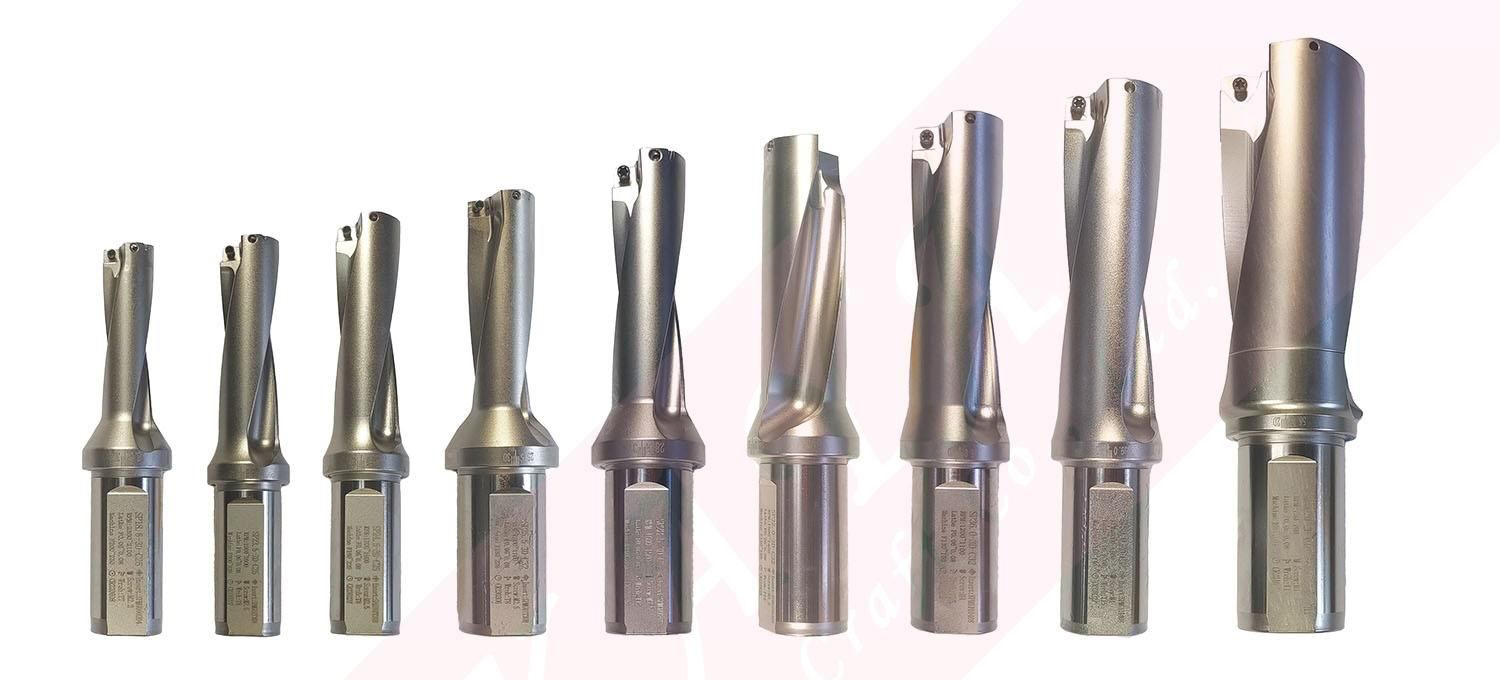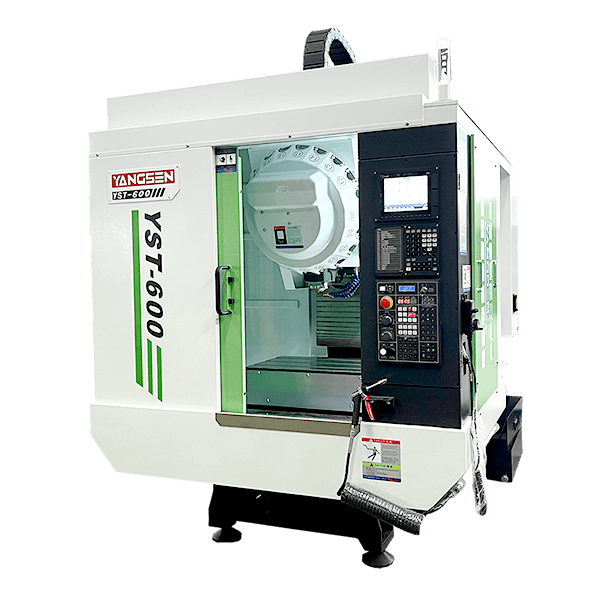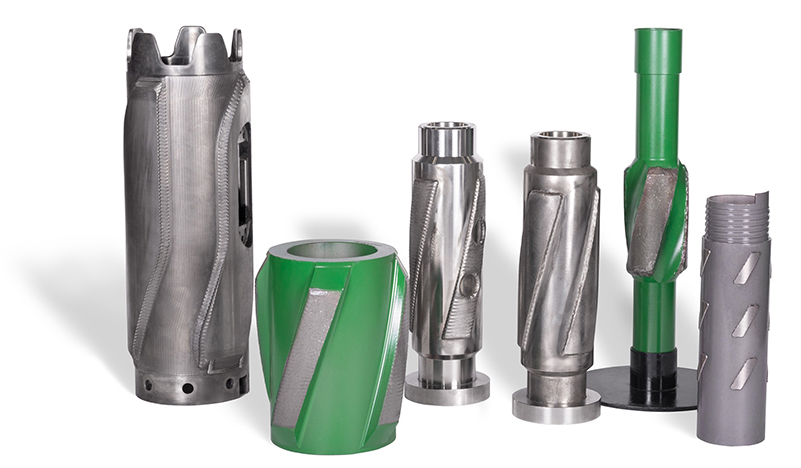Você já pegou uma furadeira e se perguntou por que ela parece ter tantos formatos, tamanhos e até sons diferentes? Perfurar faz muito mais do que perfurar um furo redondo. Carpinteiros, geólogos, engenheiros de campos petrolíferos e dentistas, todos perfuram, mas cada grupo usa uma ferramenta diferente.
Conhecer essas diferenças permite que você trabalhe mais rápido, reduza custos e mantenha a segurança. Este guia aborda todas as principais ferramentas de perfuração em uma linguagem clara e simples. Ao final, você saberá qual ferramenta é adequada para madeira, metal, concreto, rocha profunda ou até mesmo osso, e verá como os designs modernos continuam a desafiar os limites da velocidade e da precisão.
A chave de fenda clássica utiliza uma manivela em forma de U, um cabo de madeira na parte superior e uma catraca que permite trabalhar em áreas apertadas. Ao girar a manivela, a broca gira e corta as fibras de madeira de forma precisa. Carpinteiros ainda usam uma chave de fenda para marcenaria fina porque conseguem sentir o corte e parar antes que a broca rasgue a lateral de saída.
Esta ferramenta parece uma batedeira antiga. Uma engrenagem multiplica o movimento da mão, fazendo com que o mandril gire mais rápido que a alça. Ela funciona para pequenos furos-piloto em madeira, plástico ou chapas finas de metal. Amadores gostam dela porque oferece controle total sem fios ou pilhas.
Uma mola dentro do corpo gira a broca cada vez que você empurra a alavanca para baixo. Eletricistas antigamente usavam furadeiras de pressão para fazer furos para parafusos em caixas de distribuição. Elas são rápidas, silenciosas e leves o suficiente para caber no bolso da camisa.
Uma furadeira com fio é alimentada pela rede elétrica, o que significa que funciona o dia todo sem precisar trocar as pilhas. Ela utiliza um mandril com ou sem chave e cobre furos de brocas helicoidais de 1 mm até brocas chatas de 38 mm em madeira macia.
Os pacotes de íons de lítio permitem que esta furadeira vá a qualquer lugar. Uma embreagem deslizante para o motor quando um parafuso atinge o torque definido. Os construtores aparafusam centenas de parafusos com pouca pressão nos pulsos, pois o motor, e não a mão, faz o trabalho pesado. Os modelos sem fio agora rivalizam com as pequenas furadeiras com fio em velocidade e torque.
Uma furadeira de impacto adiciona pequenos golpes em linha à ação de rotação. A batida rápida ajuda a broca a lixar a alvenaria sem obstruir. Reformadores escolhem esta ferramenta quando precisam fixar âncoras em paredes de tijolo ou bloco.
O martelo perfurador passa da percussão à percussão real. Um pistão interno aciona a broca como uma britadeira em miniatura. As hastes SDS ou SDS-Plus travam no eixo para que nunca deslizem. Os trabalhadores escolhem uma furadeira SDS quando precisam perfurar furos de 16 mm em concreto armado o dia todo.
Uma chave de impacto gira em vez de golpear para a frente. Ela fornece rajadas rápidas de torque que soltam parafusos difíceis ou afundam parafusos de fixação sem necessidade de perfuração prévia. A pinça sextavada aceita brocas de chave de fenda, ajustadores de porca e pequenas brocas de metal.
Uma caixa de engrenagens de 90 graus aproxima o mandril da superfície, permitindo que encanadores e marceneiros se esprema entre pinos ou vigas. O torque permanece alto, mas a carcaça elimina obstáculos que bloqueiam brocas retas.

As brocas são tão importantes quanto o motor. Cada geometria e material da ponta executa uma tarefa específica.
● Broca de torção – Escolha geral para madeira, plástico e metal. O aço rápido (HSS) resiste ao calor, enquanto as ranhuras espirais limpam as aparas.
● Broca de ponta Brad – Uma espora central afiada agarra as fibras da madeira e guia o corte em linha reta. As esporas laterais cortam os ombros com precisão, deixando orifícios de entrada e saída perfeitos.
● Broca de pá – Uma pá larga escava madeira rapidamente. Eletricistas e encanadores usam brocas de pá para passar cabos ou canos através de vigas.
● broca helicoidal – Um parafuso de avanço puxa a broca para a frente, de modo que o usuário aplica pouca força. Canais profundos retiram resíduos de furos longos em vigas ou postes de energia.
● Broca Forstner – Perfura cavidades de fundo plano para dobradiças ou cavilhas. Uma borda marca o corte enquanto uma ponta central direciona.
● Serra copo – Um copo com dentes de serra corta diâmetros grandes para ferragens de portas, canos de esgoto ou caixas de conduíte. Dentes bimetálicos cortam madeira e aço fino.
● Passo bit – Um cone com degraus escalonados amplia furos de paredes finas sem trocar as brocas. Os metalúrgicos adoram o acabamento liso e sem rebarbas.
● Escareador – Após um furo piloto, o escareador alarga a parte superior para que a cabeça do parafuso fique nivelada.
● Broca para alvenaria – Uma ponta de carboneto de tungstênio resiste à abrasão de tijolos e pedras quando combinada com uma furadeira de impacto.
● Brocas revestidas de cobalto ou titânio – A dureza adicional mantém o fio afiado durante a perfuração de aço inoxidável.
● Broca de diamante – Diamantes industriais unidos a uma coroa oca lixam vidro, azulejo e concreto. O resfriamento a água remove a areia e reduz a poeira.
Uma furadeira de coluna mantém o fuso reto e avança por meio de uma alavanca. Os limitadores de coluna rígidos flexionam, mantendo os furos alinhados. Um limitador de profundidade repete as configurações para trabalhos em lote.
Prensas mais altas aceitam peças mais longas, como pernas de mesa ou blocos de motor. Motores maiores giram peças maiores com menos vibração.
O braço oscila e desliza, permitindo que a cabeça alcance uma grande distância sobre a placa sem mover a peça. Metalúrgicas perfuram flanges e vigas estruturais com brocas radiais.
Um eletroímã potente prende a base a uma placa ou viga de aço. Equipes de pontes e construtores navais levantam a broca magnética em locais difíceis e perfuram furos para parafusos e rebites.
Vários fusos utilizam brocas separadas e perfuram muitos furos de uma só vez. Fábricas de móveis usam furação em grupo para acelerar a perfuração de pinos em prateleiras.
O controle do computador move a mesa e o fuso em três ou mais eixos. Os fabricantes de placas de circuito impresso dependem Furadeiras CNC para perfurar milhares de microvias em um único painel.

A linha de transmissão SDS permite que a broca deslize para dentro e para fora sob os golpes do martelo, o que significa que a energia real chega à ponta. Carpinteiros fixam âncoras para fôrmas e grampos para furacões com brocas SDS-Plus de até 30 mm.
Martelos mais pesados têm hastes de 18 mm e atingem com o triplo da força. Trabalhadores cravam cavilhas de vergalhão nas paredes da fundação e cavam canais para encanamento ou fiação.
Uma chave seletora alterna entre rotação mais martelo, somente martelo e somente rotação. No modo somente martelo, o mandril aceita formões que raspam azulejos ou lascam rejunte antigo.
Um suporte segura uma broca diamantada oca enquanto perfura lajes de concreto para dutos de HVAC ou mangueiras de utilidades. A água corre pelo eixo para resfriar os diamantes e reter a poeira.
A plataforma levanta um cinzel pesado preso a um cabo e o solta, quebrando a rocha com o impacto. Os pioneiros da indústria petrolífera perfuravam com ferramentas de cabo, e pequenas plataformas de perfuração de poços de água ainda as utilizam quando os orçamentos são limitados.
O ar comprimido aciona um martelo no fundo do poço que tritura a rocha e sopra os cascalhos pelo anular. Os garimpeiros preferem o RAB para amostragem rápida e de baixo custo.
Hastes de parede dupla injetam ar pela abertura e levantam os fragmentos de amostra para dentro do tubo interno. O caminho selado evita contaminação, permitindo que os laboratórios confiem no ensaio.
Uma broca de diamante corta um núcleo cilíndrico. Geólogos analisam o núcleo em busca do tipo de rocha, estrutura e conteúdo mineral. Sondas de perfuração fornecem dados de penetração mais lenta, mas inestimáveis.
O martelo fica atrás da broca e bate enquanto todo o conjunto gira. Os martelos DTH perfuram pedreiras de rocha dura e perfuram furos com paredes retas para melhor posicionamento dos explosivos.
Um oscilador de alta frequência faz vibrar a haste. O atrito na broca derrete as ligações do solo, permitindo que o cilindro deslize para baixo com pouca perturbação. Empresas ambientais utilizam equipamentos sônicos para núcleos limpos e sem perturbações.
Um parafuso contínuo remove o solo conforme a broca avança. Engenheiros registram formações rasas e instalam poços de monitoramento com brocas a menos de 30 m de profundidade.
Poços de petróleo se estendem por milhares de metros abaixo do fundo do mar. A coluna de perfuração carrega diversas peças especiais para suportar pressão, calor e vibração.

Tubos de aço transmitem torque e lama de perfuração do piso da plataforma para a broca. Juntas de ferramentas em cada extremidade aumentam a espessura da parede para que as roscas suportem a carga.
O HWDP conecta tubos flexíveis e colares de perfuração rígidos. Ele suaviza a transição e reduz a tensão nas juntas principais.
Barras de parede grossa adicionam peso, empurrando a broca contra a rocha. Colares mantêm a corda comprimida, o que impede que ela se enrole como uma mola.
O BHA fica entre os colares e a broca. Ele pode transportar um motor de lama, estabilizadores, jars e sensores que enviam dados em tempo real para a superfície. O projeto adequado do BHA controla a direção e amortece a vibração.
● Rolo cônico (tricone) – Três cones rolam sobre rolamentos. Dentes de aço ou pastilhas de carboneto de tungstênio britam rochas médias a duras.
● PDC (compacto de diamante policristalino) – Os discos de diamante cortam rochas com contato constante, proporcionando alta taxa de penetração em xistos e arenitos.
Um motor de deslocamento positivo transforma a potência do rotor em torque na broca. Ao dobrar a carcaça, o motor direciona o poço sem girar toda a corda.
Eletrônicos e pastilhas empurram a broca ou a direcionam para mudar de direção enquanto tudo continua girando. Este sistema perfura furos mais suaves e permanece na zona de ganho por mais tempo.
As ferramentas MWD enviam informações de profundidade, inclinação e azimute. As ferramentas LWD leem raios gama, resistividade e densidade. Esses sensores ficam a centímetros da broca e evitam deslocamentos extras.
Após a broca atingir a profundidade desejada, as equipes instalam um revestimento de aço no furo e o cimentam. Posteriormente, a tubulação de produção transporta óleo ou gás para a superfície, mantendo a pressão sob controle.
● Micro-brocas e brocas para PCB – Brocas de metal duro sólidas sob brocas de 0,2 mm para placas de circuito impresso com fusos de 50.000 rpm.
● Brocas odontológicas – Peças de mão pneumáticas giram brocas diamantadas ou de carboneto a 400.000 rpm para cortar o esmalte de forma precisa e sem calor.
● Brocas ósseas ortopédicas – Os cirurgiões usam brocas canuladas que deslizam sobre os fios-guia, garantindo que os furos se encaixem perfeitamente nos parafusos.
● Pedaços de vidro e cerâmica – Pontas de carboneto em formato de flecha iniciam o furo; núcleos de diamante finalizam bordas limpas sem rachaduras.
● Brocas de fibra óptica – Os núcleos ocos protegem as fibras frágeis enquanto as puxam através de paredes e conduítes.
Lasers de alta energia vaporizam rochas em microssegundos, deixando paredes vítreas que podem resistir ao colapso. Pesquisas sobre fornecimento de energia e custo continuam.
Água de ultra-alta pressão (às vezes com grãos abrasivos) corta formações quebradiças. Jatos de água geram pouca vibração e podem reduzir o desgaste da ferramenta.
Descarga elétrica em fluido quebra a rocha com ondas de choque. O sistema não precisa de contato direto com a broca, então o desgaste da broca cai a zero.
O nitrogênio líquido congela sedimentos moles, tornando-os sólidos, permitindo que uma broca convencional corte em linha reta. Arqueólogos perfuram núcleos de gelo polar sem derreter camadas.
1. Combine o material. Madeira favorece bordas afiadas e baixa velocidade. Concreto precisa de carboneto e ação de martelo. Aço temperado requer pontas de cobalto ou carboneto com óleo de corte.
2. Saiba o tamanho e a profundidade do furo. Brocas de torção curta mantêm a precisão de até 13 mm. Diâmetros maiores exigem brocas de lâmina, serras copo ou perfuratrizes. Poços profundos dependem da circulação de lama para limpar os cascalhos.
3. Escolha uma fonte de energia. Modelos com fio fornecem energia infinita em uma bancada. Furadeiras sem fio percorrem telhados e campos. Ferramentas pneumáticas brilham em minas onde faíscas devem ser mantidas longe.
4. Planeje a remoção dos cavacos. Flautas, ar, lama ou água transportam resíduos. Se lascas bloquearem o furo, a broca queima ou quebra.
5. Respeite a segurança. Use proteção para os olhos, fixe a peça e mantenha-se equilibrado. Use a empunhadura lateral em furadeiras de alto torque. Substitua brocas cegas; elas travam e travam.
6. Pense em ergonomia. Uma furadeira de ângulo reto pode poupar seu pulso em espaços apertados. As alças antivibração dos martelos rotativos reduzem a fadiga durante longos turnos.
As ferramentas de perfuração abrangem uma gama enorme, desde uma furadeira de pressão do tamanho da palma da mão que perfura um furo piloto até um equipamento de fundo marinho que crava uma broca diamantada a cinco quilômetros abaixo das ondas. Cada ferramenta resolve um problema claro: cortar um material específico, atingir uma determinada profundidade, direcionar um caminho ou proteger uma amostra. Ao identificar essas necessidades, o longo corredor de brocas e brocas deixa de ser um quebra-cabeça e se transforma em um menu claro. Da próxima vez que você se deparar com um pedaço de madeira, uma parede de concreto ou camadas de rocha antiga, saberá qual broca escolher, como ela funciona e por que merece seu lugar na caixa de ferramentas.